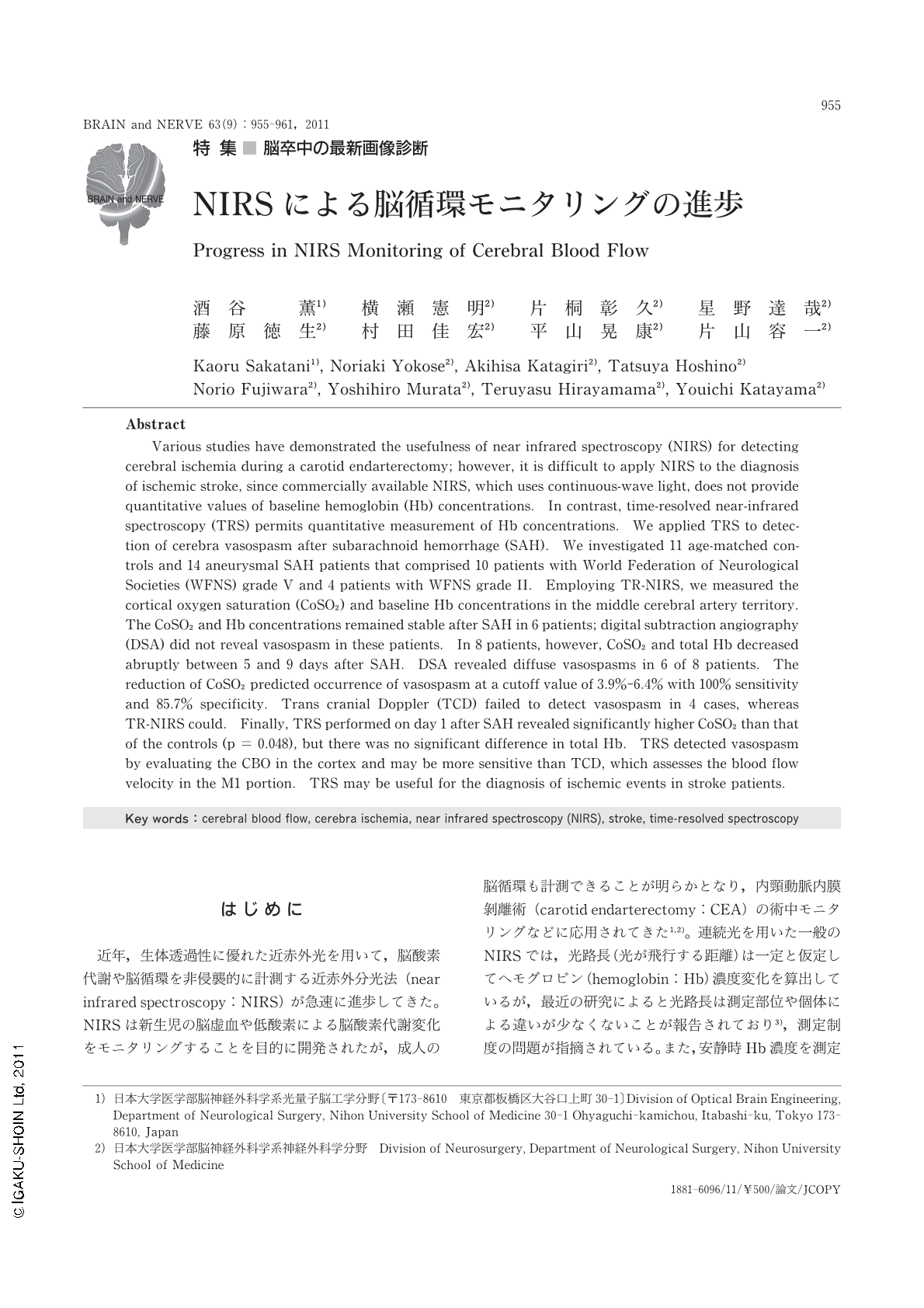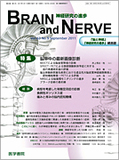Japanese
English
- 有料閲覧
- Abstract 文献概要
- 1ページ目 Look Inside
- 参考文献 Reference
はじめに
近年,生体透過性に優れた近赤外光を用いて,脳酸素代謝や脳循環を非侵襲的に計測する近赤外分光法(near infrared spectroscopy:NIRS)が急速に進歩してきた。NIRSは新生児の脳虚血や低酸素による脳酸素代謝変化をモニタリングすることを目的に開発されたが,成人の脳循環も計測できることが明らかとなり,内頸動脈内膜剝離術(carotid endarterectomy:CEA)の術中モニタリングなどに応用されてきた1,2)。連続光を用いた一般のNIRSでは,光路長(光が飛行する距離)は一定と仮定してヘモグロビン(hemoglobin:Hb)濃度変化を算出しているが,最近の研究によると光路長は測定部位や個体による違いが少なくないことが報告されており3),測定制度の問題が指摘されている。また,安静時Hb濃度を測定できないという問題点もある。
本稿では,NIRSを用いた脳循環計測の測定精度を向上させ,NIRSの臨床診断における有用性を向上させることを目的とした最近の研究について解説する。
Abstract
Various studies have demonstrated the usefulness of near infrared spectroscopy (NIRS) for detecting cerebral ischemia during a carotid endarterectomy; however,it is difficult to apply NIRS to the diagnosis of ischemic stroke,since commercially available NIRS,which uses continuous-wave light,does not provide quantitative values of baseline hemoglobin (Hb) concentrations. In contrast,time-resolved near-infrared spectroscopy (TRS) permits quantitative measurement of Hb concentrations. We applied TRS to detection of cerebra vasospasm after subarachnoid hemorrhage (SAH). We investigated 11 age-matched controls and 14 aneurysmal SAH patients that comprised 10 patients with World Federation of Neurological Societies (WFNS) grade V and 4 patients with WFNS grade II. Employing TR-NIRS,we measured the cortical oxygen saturation (CoSO2) and baseline Hb concentrations in the middle cerebral artery territory. The CoSO2 and Hb concentrations remained stable after SAH in 6 patients; digital subtraction angiography (DSA) did not reveal vasospasm in these patients. In 8 patients,however,CoSO2 and total Hb decreased abruptly between 5 and 9 days after SAH. DSA revealed diffuse vasospasms in 6 of 8 patients. The reduction of CoSO2 predicted occurrence of vasospasm at a cutoff value of 3.9%-6.4% with 100% sensitivity and 85.7% specificity. Trans cranial Doppler (TCD) failed to detect vasospasm in 4 cases,whereas TR-NIRS could. Finally,TRS performed on day 1 after SAH revealed significantly higher CoSO2 than that of the controls (p = 0.048),but there was no significant difference in total Hb. TRS detected vasospasm by evaluating the CBO in the cortex and may be more sensitive than TCD,which assesses the blood flow velocity in the M1 portion. TRS may be useful for the diagnosis of ischemic events in stroke patients.

Copyright © 2011, Igaku-Shoin Ltd. All rights reserved.


